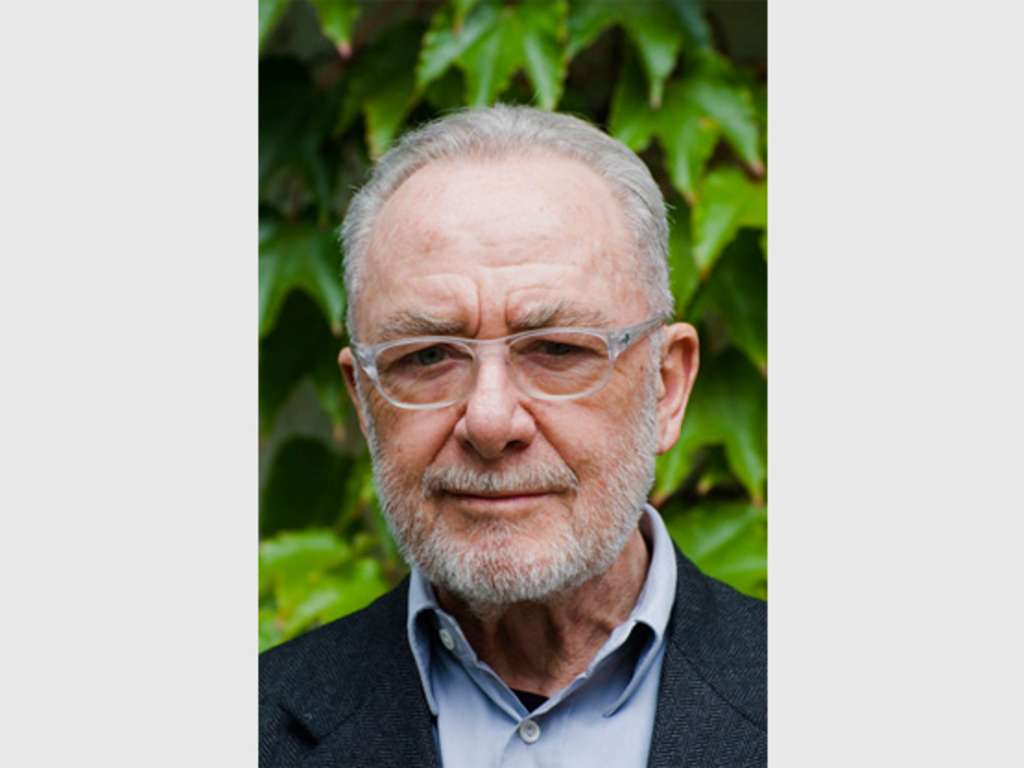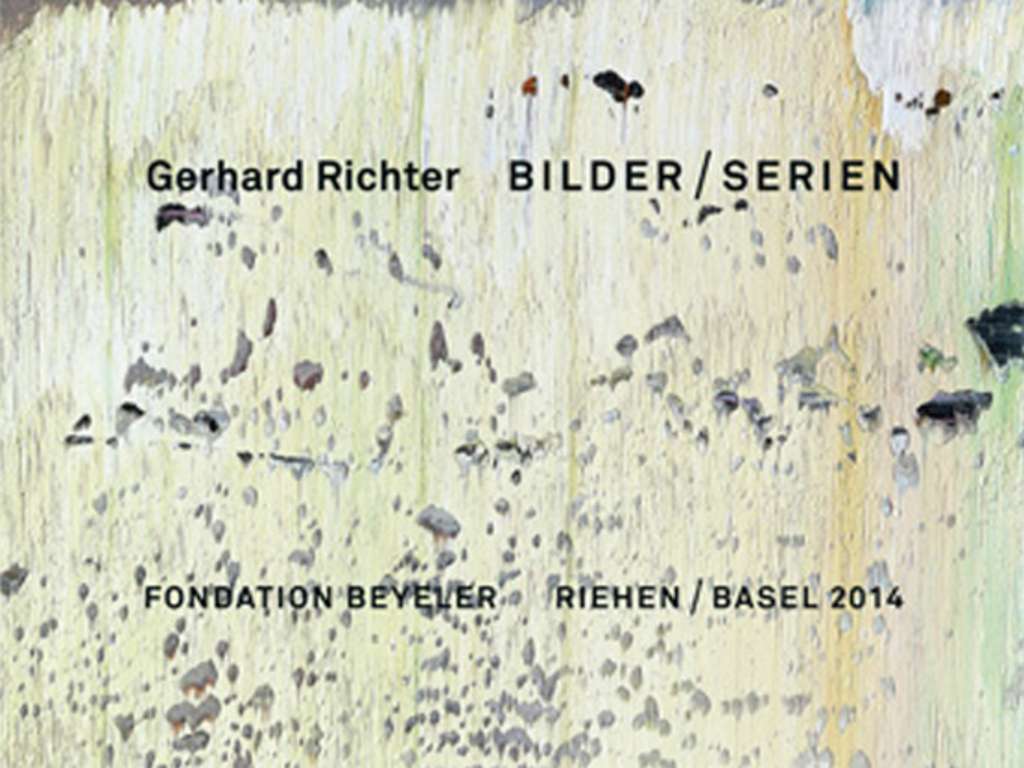May 18 – September 7, 2014
The exhibition at the Fondation Beyeler is the largest ever in Switzerland to be devoted to Gerhard Richter (born in Dresden in 1932, now based in Cologne), arguably the most important artist of our time. It centers for the first time on the artist’s series, cycles, and interior spaces. A counterpoint to these is formed by a number of single works, many of which have achieved iconic status. Some hundred pictures are on show — portraits, still-lifes, landscapes, abstract images — along with two glass objects and sixty-four overpainted photographs. The selection encompasses the major periods in Richter’s career since 1966, including recent works not yet seen in public.
In a career spanning sixty years Richter has created an oeuvre of striking thematic and stylistic variety. He has used photographs as the basis of figurative paintings. His abstract works range from pictures featuring color to monochrome fields and digitally generated compositions. "If the abstract pictures show my reality, then the landscapes and still-lifes show my yearning," he wrote in 1981. The artist has also addressed recent history. The exhibition therefore includes the legendary fifteen-part cycle from the Museum of Modern Art, New York, revolving around the Baader-Meinhof gang and the events of October 18, 1977.
In the 1950s Richter studied mural painting at the Art Academy in Dresden. Since then many sketches and statements by him have testified to the crucial role played by architectural contexts in his work: "That is such a dream of mine — that the pictures will become an environment or become architecture.” Richter’s interest in the interaction between single pictures, groups of works, and the surrounding spaces is explored vividly in the exhibition, which has been put together by curator Hans Ulrich Obrist in close cooperation with the artist.
S. mit Kind (S. and Child), 1995
The realistic portraits in this eight-part cycle all center upon mother and child, who present themselves to the viewer from different sides, at times in intimate close-up. The paintings are based on personal photographs, but at the same time reveal links with the topos of the representation of the Virgin and Child, and in their iconography and subject bring into play the question of the relationship between tradition and present. Gerhard Richter worked on the surfaces to a varying extent, resulting in eight small pictures with differing textures and degrees of abstraction. According to the artist, it is “the same as with a piece of music: there are eight little sequences—soft ones, brash ones, whatever happens to emerge.” The eight paintings are united by their intimate subject and belong firmly together as a group, and yet the quality of focus, choice of angle and lighting mean that each portrait can be perceived as an independent, stand-alone work.
Verkündigung nach Tizian (Annunciation after Titian), 1973
On a trip to Venice in 1972, Gerhard Richter was deeply impressed by Titian’s painting of the Annunciation, which he saw in the Scuola Grande di San Rocco: “I just wanted it for myself, for my apartment, so I decided to copy it, as far as I could. But I couldn’t even manage a semi-presentable copy. So then I painted five variations on the Annunciation that didn’t have much to do with Titian’s Annunciation but that I was quite happy with.” In his five canvases, Richter has largely adopted the division, established in the original composition, into a left-hand pictorial zone with the angel and a right-hand zone with the Virgin. Even if the figures increasingly dissolve into abstract whirls of color, their link to the original motif is upheld by Richter’s adherence to reds, blues and blacks. In contrast to the Eight Student Nurses, the Titian series is not about the search for the formal similarity of the subject, but about the relationship of a theme to the possibilities of its variations. Richter approaches the Renaissance composition with increasing degrees of abstraction. The canvas that is the most blurred of all is not the last in the series, however, but the second. The first and second versions thus establish the framework for the ‘missing’ intermediary stages. At the same time, the most abstract picture does not become the definitive result of the creative process, but one possible solution among many.
Wald (Forest) 2005
The twelve-part Wald cycle asserts itself on the boundary between figurative and abstract painting. Vertical and horizontal welts, lines and bands of paint structure the surfaces against shadowy backgrounds. Gouge marks that abruptly start and stop furrow the canvases. Spatial depth is evoked by means of superimposed layers. Dark and mysterious sceneries offer the viewer spaces full of potential new discoveries. The pictorial motif of the forest (the German word ‘Wald’ means ‘forest’ or ‘wood’) is strongly anchored in the age of German Romanticism, in particular. As an alternative world and a place of yearning that gives meaning to existence, the forest is a perfect vehicle of the irrational and mystical. The paintings of Gerhard Richter’s Wald cycle create an environment of complex emotions, in which the tension between feeling lost and feeling safe becomes acutely palpable. In these powerful canvases, the artistic act of creation and Richter’s searching and experimenting during the painting process can be visually retraced. Richter himself names the feel-ing of bewilderment as “the strongest motivation for and during painting. And the forest in general has a special significance, perhaps more so in Germany than anywhere else. You can lose your way in forests, feel deserted, but also secure, held fast in the bosom of the undergrowth. A fine Romantic subject.”

Biography
GERHARD RICHTER *1932
Gerhard Richter is born on February 9, 1932 in Dresden. Grows up in Reichenau and in Waltersdorf in Upper Lusatia.
In the footsteps of John Cage
On 2 July 2014, American percussionist and composer Robyn Schulkowsky will play pieces by John Cage. Gerhard Richter speaks with admiration about John Cage, his compositions and the use of random procedures. In 2006, Richter painted the group Cage, which is shown in the exhibition.
Interview with Robyn Schulkowsky
Percussionist Robyn Schulkowsky in conversation with Mirjam Baitsch (Fondation Beyeler) on the occasion of her concert at Fondation Beyeler.

Catalogue «Gerhard Richter»
Over the sixty years of his artistic career, Gerhard Richter (* 1932 in Dresden) has produced a standardsetting oeuvre whose thematic and stylistic diversity has no equal among the art of our time. This extensive monograph is the first to present the complete range of the numerous works Richter realized as series, cycles, and spaces. It includes figurative paintings, such as landscapes, still lifes, and portraits, many of which are based on photographs, such as the series S. and Child, a personal and intimate variation on the traditional subject of the Madonna and Child. It also features abstract works, for which Richter draws from a changing repertoire of forms and colors to produce both small and monumental paintings. This generously sized volume reveals an astonishing spectrum of Richter’s paintings in all of their dimensions and techniques.
Edited by Hans Ulrich Obrist, Fondation Beyeler, Texts by Georges Didi-Huberman, Dietmar Elger, Michiko Kono, Hans Ulrich Obrist, Dieter Schwarz, graphic design by Uwe Koch.